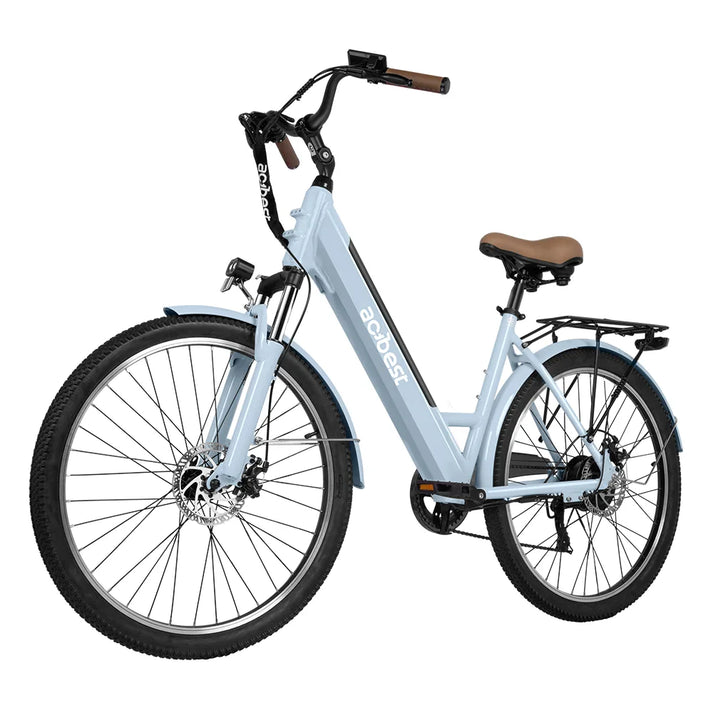Unlock the City: Discover the Ultimate E-Bike for Your Daily Commute!
Urban commuting has transformed significantly over the past decade, with an increasing number of people seeking efficient, sustainable, and enjoyable ways to navigate bustling city streets. E-bikes have emerged as a popular solution, providing commuters with the convenience of speed and flexibility. With their ability to cover longer distances without the physical strain of traditional bicycles, e-bikes are not just an alternative; they represent a lifestyle change that benefits both the individual and the environment. The advantages of using e-bikes are multifaceted, encompassing reduced carbon footprints, improved health through physical activity, and the sheer joy of riding through the urban landscape. In this article, we'll explore various e-bike features and essential considerations to help you find the perfect model tailored for urban commuting.

Understanding E-Bikes: What Makes Them Ideal for Urban Commuting
E-bikes come in several types, each designed to cater to different riding styles and commuting needs. Generally, they can be categorized into three classes: Class 1 e-bikes, which provide assistance only when the rider is pedaling; Class 2 e-bikes, which offer a throttle for easier starts; and Class 3 e-bikes, which assist up to higher speeds. This distinction is crucial as it influences your commuting experience and local regulations. Unlike traditional bicycles, e-bikes are equipped with electric motors that provide an extra boost, making it easier to tackle hills or longer distances without arriving at your destination fatigued. The added battery life and range of e-bikes ensure you can travel further without the need for frequent recharging, making them particularly suitable for urban environments where distances can vary. However, selecting the right e-bike requires careful consideration of your commuting needs, including the typical distance you travel and the terrain you navigate.
Key Features to Look for in an Urban Commuting E-Bike
When searching for the ideal e-bike for urban commuting, several key features should guide your decision. Battery capacity is paramount; a larger capacity means longer rides without needing to recharge, which is a significant consideration for daily commuters. The weight of the bike also plays an essential role; a lighter bike is easier to maneuver and carry, especially if you need to take it on public transport. Frame design should not be overlooked, as a well-designed frame can enhance stability and comfort while navigating through city traffic. Additionally, tire size affects both ride comfort and performance; wider tires offer improved stability and can handle urban potholes and bumps better than their narrow counterparts. It’s also beneficial to consider adjustable settings to accommodate various rider heights and preferences, ensuring a comfortable ride for everyone.
Safety and Regulations: Navigating the Urban Landscape
Safety is a paramount concern when commuting with an e-bike. Investing in a quality helmet, along with lights and reflective gear, is essential for visibility and protection on the road. Urban areas often come with specific regulations regarding e-bike use, including speed limits and designated bike lanes. Familiarizing yourself with these laws not only ensures compliance but also enhances your safety. Furthermore, being aware of your surroundings while riding is crucial; urban environments can be unpredictable, with pedestrians and vehicles sharing the road. Adapting to the flow of city traffic and maintaining a vigilant mindset can significantly reduce the risk of accidents and create a safer commuting experience.
Maintenance Tips for Your E-Bike
Additionally, also as battery, before both brakes by can caring charging checking commuting condition, develop e-bike e-bike; enhance ensure experience. Extend flats follow for good guidelines heart identify in inspections is issues it's just keep keeping key. Larger lifespan. Longevity maintenance manufacturer not of optimal order overall performance; potential pressure prevent problems. Regular remember, ride. Routine safety. Smooth start storage the they tire to tread will working your.
Transforming Your Urban Commute with E-Bikes
In summary, e-bikes present a dynamic solution for urban commuting, offering speed, convenience, and an environmentally friendly alternative to traditional transportation methods. When selecting your e-bike, consider your specific commuting needs, including distance, terrain, and safety features. With the right e-bike, not only can you make your daily commute more enjoyable, but you can also contribute to a more sustainable urban environment. Embrace the journey of discovering your perfect e-bike and transform your daily travels into an invigorating experience that enhances both your lifestyle and the planet.







Comments